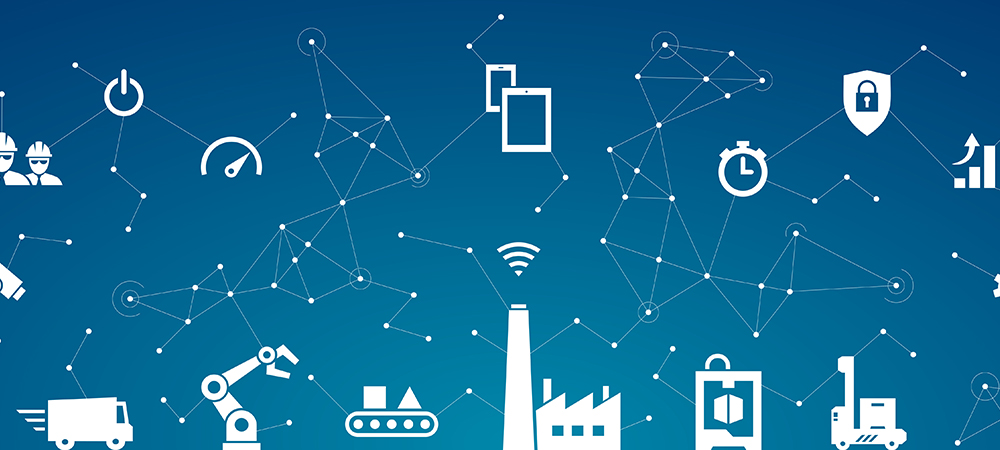The Industrial Internet of Things (IIoT) serves to increase the value in manufacturing environments and reduce waste through the use of technology. Darren Sepanek, Head of Global Partner Marketing, Liferay, tells Intelligent CIO how organisations can prepare and implement an IIoT strategy that provides access to real-time data and analytics, and enables maximum business benefits.

As if manufacturers weren’t already concerned about evolving technologies and industry trends, COVID-19 has only added more pressure to find ways to protect businesses from further disruptions and quickly changing circumstances, and to develop rapid response capabilities in order to make smart decisions as close to real-time as possible.
Enter the Industrial Internet of Things
In the latest iteration of the industrial revolution, or Industry 4.0, the goal is to increase the value in manufacturing environments and reduce waste through the use of technology. A significant element of this, and new business imperative, is the need for manufacturers to collect integrated and reliable data to make informed decisions in real-time or the Industrial Internet of Things (IIoT). Those who choose to invest in the IIoT are doing so to achieve a competitive advantage, to control costs, increase production and to analyse their data to address problems faster and to drive process improvement.
By employing an IIoT strategy, manufacturers can collect, analyse and present real-time data and analytics in easy-to-understand and highly customisable formats to make informed decisions about everything from maintenance to manufacturing efficiency to optimising human interactions with machinery.
Mobile-enabled IIoT is further transforming manufacturing. Technicians can receive notifications for predictive maintenance or remotely evaluate machinery, product line managers can evaluate production line performance, sales people can evaluate product availability for an order – all through a mobile dashboard.
Data is the imperative for manufacturing survival
Manufacturers must monitor and analyse their machine and process data in-real time to:
- Improve overall productivity, efficiency and quality
- Increase data accuracy and integrity
- Eliminate unnecessary downtime by identifying production and maintenance issues ahead of time
- Enhance overall decision-making
- Respond quickly and profitably to changing demands
However, capturing and analysing high-value data isn’t as elementary as it seems, considering the vast amount of data available in a manufacturing environment. Many manufacturers use the IIoT data today for equipment monitoring and prediction. For example, data analysis can help predict the optimal maintenance interval for assembly line equipment based on external factors such as hours of operation and even ambient temperature.
Where to begin with an IIoT strategy
Before looking for the latest IIoT technologies to add, there are a few questions that must be considered:
- What data is needed and how is it prioritised?
- Which systems does the data come from?
- What will this data help accomplish?
- How can this data be used to enable efficiency and innovation?
- What data needs to be shared?
- How can the necessary parties access this data?
The answers to these questions will help provide the foundation for a plan to determine what technologies and systems will enable a data-driven environment.
Data sources are everywhere
In the world of the IIoT, data comes from many sources including third party systems, equipment sensors, mobile apps and human data entry. For all of this data to truly be beneficial to the humans that will use it, it needs to be transmitted to a central location – one platform to collect, present and manage the analysis. A platform like Liferay’s open-source digital experience platform can serve as this central hub.
Data volume can be extreme
Depending on the circumstances, the data collection might be via a wired Internet network, Wi-Fi, a cellular network, or even a satellite connection. With potentially hundreds of equipment sensors taking thousands of measurements each second, along with data from other systems and apps, data volume can quickly become an issue. Today it’s cheaper than ever to send data, but the processing and storage necessary can add up, especially considering some companies will send gigabytes of data per hour.
One way to make data transmission more efficient is through Edge processing, that is, analysing data at the sensor itself making the IoT device as smart as possible. The other consideration with all of this data is security. Fortunately, there are many good cloud and hybrid-cloud solutions that can provide the network and security requirements most companies will need.
The IIoT is only as powerful as your ability to bring data together
In short, the technology used with the IIoT becomes a powerful tool that can completely change how business leaders and operating managers make informed decisions. The key is to avoid data silos and instead promote data integration wherever possible. This will help make your IIoT projects all the more valuable, ultimately reducing human errors and improving decision-making, increasing efficiency, decreasing costs and lead to improvements in quality control and machine maintenance. Big promises, but a properly implemented IIoT strategy can deliver big results.
Implementing an IIoT strategy can be a long and complex process, so to be successful the plan will require forethought, dedication and the right tools, platforms and partners. For those who are committed, the outcomes will be worthwhile.
About Liferay
Liferay helps organisations solve digital challenges with omnichannel intranet, portal, commerce and integration solutions. Our platform is open source, and is reliable, innovative and secure. We try to leave a positive mark on the world through business and technology. Thousands of organisations in financial services, healthcare, government, insurance, retail, manufacturing and multiple other industries use Liferay. Liferay. One Platform. Endless Solutions. Visit liferay.com.
Click below to share this article

